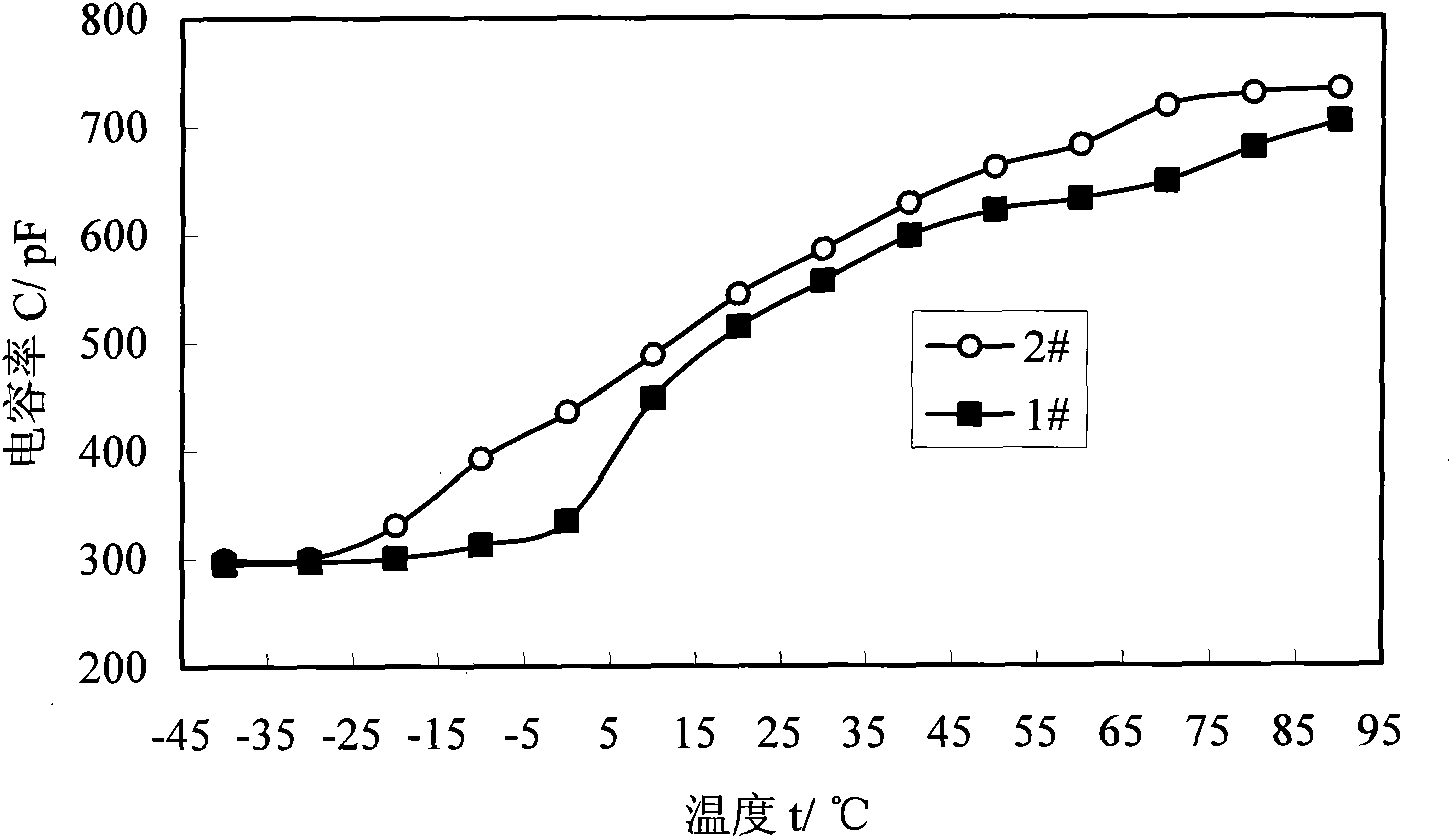Cement-based temperature sensing element for positive and negative temperature automatic measurement
A sensing element, cement-based technology, applied in the field of sensing elements, can solve problems such as data instability, and achieve the effects of repeated measurement data stability, good compatibility, and guaranteed accuracy
- Summary
- Abstract
- Description
- Claims
- Application Information
AI Technical Summary
Problems solved by technology
Method used
Image
Examples
Embodiment Construction
[0027] Table 1 Alite-barium calcium sulfoaluminate cement properties
[0028]
[0029] Table 2 Chopped Polypropylene Hydrocarbon Fiber Performance Parameters
[0030]
[0031] Table 3 Performance parameters of carbon nanotubes
[0032]
[0033] Table 4 Alite-barium calcium sulfoaluminate cement clinker each mineral phase system ratio (wt%)
[0034]
[0035] Prepare alite-barium calcium sulfoaluminate cement, chopped polypropylene hydrocarbon carbon fibers and carbon nanotubes with physical and chemical properties as described in Table 1, Table 2, Table 3 and Table 4. Chopped polypropylene carbon fiber is cleaned and dried, and a certain proportion of chopped polypropylene carbon fiber is added to the methyl cellulose solution, stirred with a glass rod to ensure that the chopped polypropylene carbon fiber is completely dispersed; at the same time, carbon nanotubes are added to ten Disperse in sodium dialkylbenzenesulfonate solution, then pour the above two solutio...
PUM
| Property | Measurement | Unit |
|---|---|---|
| diameter | aaaaa | aaaaa |
| length | aaaaa | aaaaa |
Abstract
Description
Claims
Application Information
 Login to View More
Login to View More - R&D
- Intellectual Property
- Life Sciences
- Materials
- Tech Scout
- Unparalleled Data Quality
- Higher Quality Content
- 60% Fewer Hallucinations
Browse by: Latest US Patents, China's latest patents, Technical Efficacy Thesaurus, Application Domain, Technology Topic, Popular Technical Reports.
© 2025 PatSnap. All rights reserved.Legal|Privacy policy|Modern Slavery Act Transparency Statement|Sitemap|About US| Contact US: help@patsnap.com



